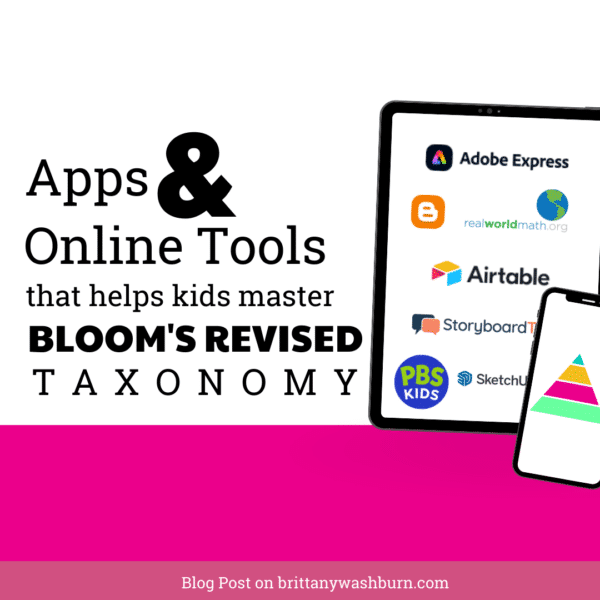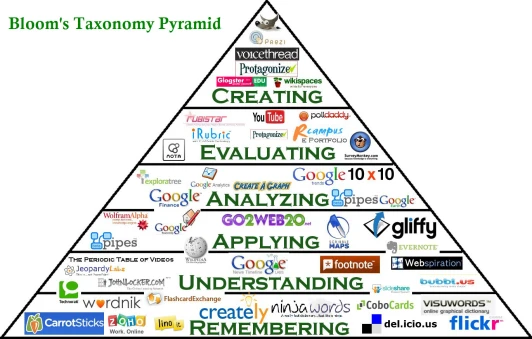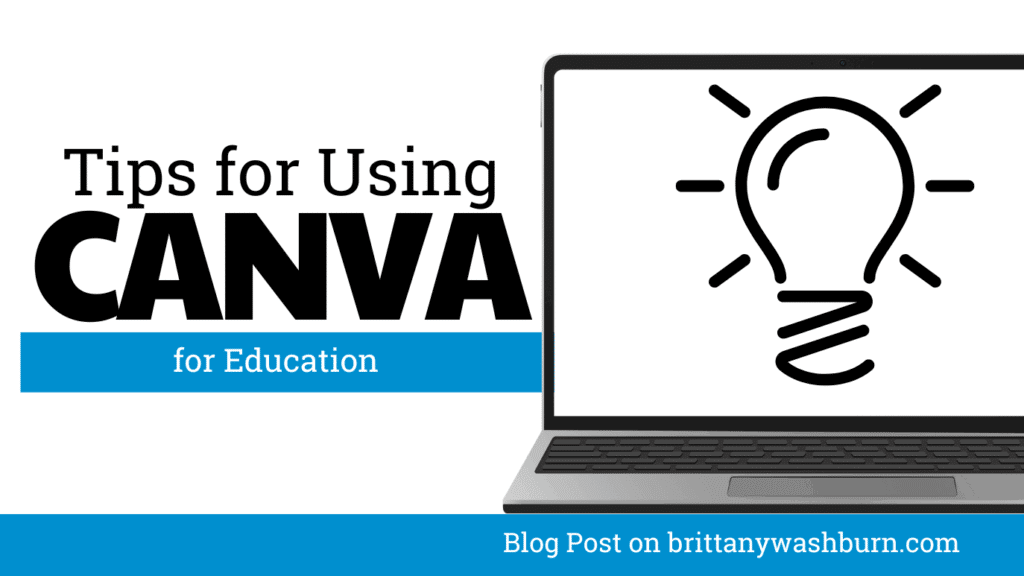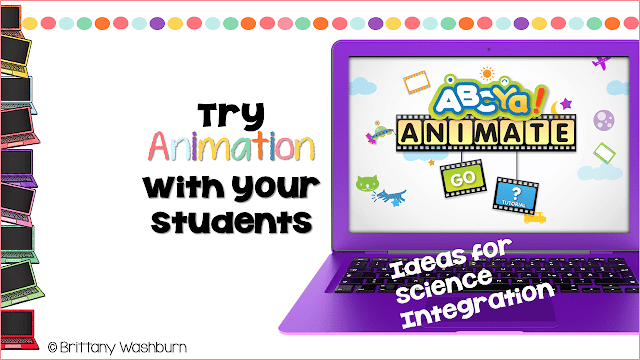Apps and Online Tools That Help Kids Master Bloom’s Revised Taxonomy
Bloom’s Taxonomy was first devised in the 50’s, and then revised in the early 2000’s. In one form or another it has shaped how teachers think about nourishing and engaging their students for over 60 years. That’s no wonder, since it encourages the development of skills to help students of all ages solve problems and think critically both in and out of the classroom. Additionally, I’ve found the verbs developed for each of the stacking levels of Bloom’s Revised Taxonomy help me plan learning activities that will keep students challenged in their Zone of Proximal Development.
In an increasingly digital world, teachers are now finding ways to incorporate apps and online resources that help support students as they work through Bloom’s Revised Taxonomy.
Creating:
Put elements together to form a new coherent or functional whole; reorganize elements into a new pattern or structure (design a new set for a theater production, write a thesis, develop an alternative hypothesis based on criteria, invent a product, compose a piece of music, write a play).
Evaluating:
Make judgments based on criteria and standards (e.g., detect inconsistencies or fallacies within a process or product, determine whether a scientist’s conclusions follow from observed data, judge which of two methods is the way to solve a given problem, determine the quality of a product based on disciplinary criteria).
Analyzing:
Break material into its constituent parts and determine how the parts relate to one another and/or to an overall structure or purpose (e.g., analyze the relationship between different flora and fauna in an ecological setting; analyze the relationship between different characters in a play; analyze the relationship between different institutions in a society).
-
Thinglink, Airtable, Storyboard That, Instructables, Popplet, etc.
Applying:
Use information or a skill in a new situation (e.g., use Newton’s second law to solve a problem for which it is appropriate, carry out a multivariate statistical analysis using a data set not previously encountered).
-
Real World Math, Wolfram Alpha, Zoom, Kick Box, Prezi, Voki, Grammarly, etc.
Understanding:
Demonstrate comprehension through one or more forms of explanation (e.g., classify a mental illness, compare ritual practices in two different religions).
Remembering:
Retrieve, recall, or recognize relevant knowledge from long-term memory (e.g., recall dates of important events in U.S. history, remember the components of a bacterial cell).
Here are some Bloom’s Taxonomy Question Stems for technology applications at the elementary level:
Remembering:
- What are the names of the tools we use in this program?
- How do we log in to the computer?
- What are the basic functions of a computer mouse?
Understanding:
- How does this program work?
- What is the purpose of this tool?
- Can you explain how to use this feature?
Applying:
- How can you use a word processing program to write a story?
- Can you use a drawing program to create a picture?
- How can you use a presentation program to share information with others?
Analyzing:
- How are different types of media used in this program?
- What is the difference between a spreadsheet and a database?
- Can you identify the different components of a webpage?
Evaluating:
- What are the advantages and disadvantages of using a particular software program?
- How effective is this program in helping you achieve your goals?
- Can you provide constructive feedback on someone else’s digital project?
Creating:
- How can you use technology to solve a real-world problem?
- Can you design a game that helps others learn about a topic?
- Can you create a multimedia project that showcases your learning on a particular topic?

Check out some other posts from the Websites category:
How to Access and Use Free Teaching Resources on Google Workspace
Google Workspace offers a wide array of free teaching resources to enhance the learning experience…
Creating Visuals and Simple Graphics with Canva for Education
Visual communication plays a crucial role in education, both engaging students and enhancing learning experiences….
Mastering Canva for the Classroom: Advanced Tips and Tricks
Canva is more than just a design tool—it’s a game-changer for educators looking to enhance…
How to use Pixlr with elementary and middle school students
Pixlr is a free online image editing and design tool that can be a great…
How to use Breakout EDU in the elementary classroom
Breakout EDU is an innovative approach to classroom learning that has been gaining popularity in…
How to use Blooket with elementary students
Teachers are always on the lookout for new and innovative ways to engage their students…















